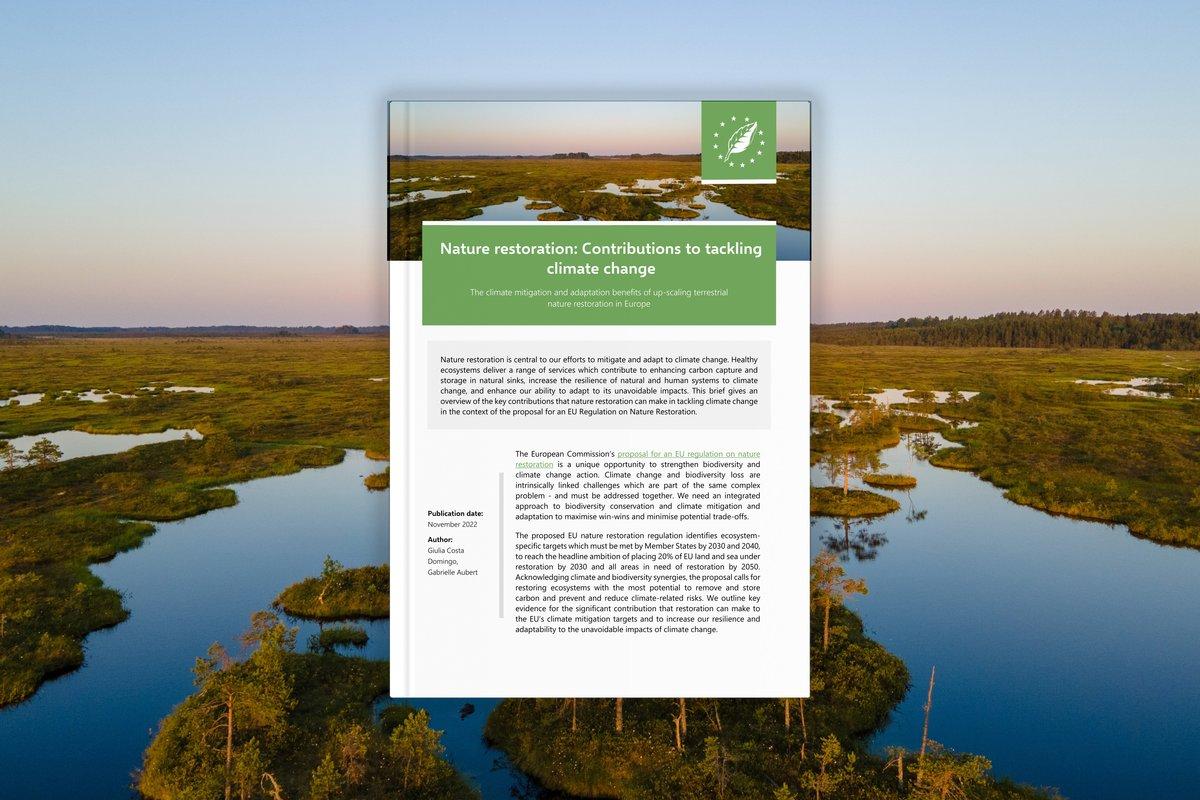AUTHORS: Giulia Costa Domingo, Gabrielle Aubert
The proposed EU regulation for nature restoration offers a unique opportunity to tackle both biodiversity loss and climate change through an integrated approach. Restoring ecosystems is essential to safeguard their carbon storage and enhance their sequestration capacities as well as increasing resilience and adaptability to the impacts of climate change. This policy brief highlights the key contributions that the proposed regulation can make to mitigating and adapting to climate change.
Today, COP27 in Sharm El-Sheik will address the climate and biodiversity nexus and the importance of tackling these major issues together. Nature restoration and nature-based solutions are a vital tool for mitigating climate change and there is an urgent need for EU legal and policy frameworks to enable their uptake. Nature restoration and nature-based solutions are a vital tool for mitigating and adapting to climate change and there is an urgent need for EU legal and policy frameworks to enable their uptake.
Climate mitigation benefits
Nature restoration can contribute significantly to the EU’s climate mitigation targets by enhancing carbon sequestration and storage capacities of ecosystems, while reducing the significant carbon emissions that currently come from land.
Action under Article 4 of the proposed regulation, which requires restoration of wetlands, forests and grassland habitats (among other habitats listed in the EU Habitats Directive), could restore significant natural carbon sequestration and storage capacities.
Restoring peatlands, agroecosystems and forests offers the greatest carbon storage and sequestration potential.
- Peatland rewetting under Article 9 of the proposed regulation can significantly reduce net GHG emissions. Rewetting 35% of the total area of agriculturally used peatlands in the EU under a mix of grassland and cropland will reduce emissions by 25%. Rewetting cropland instead of grassland would give a higher emission reduction.
- Restoring agroecosystems under Article 9 is also key to restoring carbon sinks and storage capacities. EU cropland and grassland emit together 60 million tonnes of CO2 equivalent per year. The conversion of cropland to grassland has the highest potential to achieve net gains in soil carbon stock. Improved crop rotations, agroforestry, and organic farming also have potential to reduce emissions and restore soils.
- Restoring, recreating, and enhancing the adaptability of forests under Article 10 can significantly contribute to mitigating emissions by increasing the forest carbon sink and avoiding emissions associated with fires, insect outbreaks, and other disasters. Forests are currently the EU’s main carbon sink. However, the capacity of the EU’s forests to sequester and store carbon has been decreasing, and some forest areas are now net sources of emissions.
Overall, nature restoration is crucial to reach the EU’s climate objectives, as the EU.
Climate change resilience and adaptation benefits
Nature restoration can also contribute to reducing the intensity and frequency of climate-related risks and reducing the vulnerability of terrestrial and human systems to their impacts. Nature restoration therefore delivers important solutions to social and economic challenges.
- Flood risk can be reduced by restoring wetlands and freshwater ecosystems as it improves floodwater retention areas. Urban and agricultural restoration can also contribute to reducing flood risk related ecosystems. Restoring wetlands also plays an important role in safeguarding water supply and quantity.
- Access to green spaces reduces climate-related health risks from heat stress, reduces noise and air pollution, and promotes physical activity. Contact with nature has positive mental health benefits – reducing anxiety, depression and loneliness.
- Restoration can help create new jobs and sustain jobs which are likely to be impacted by climate change.
Read more about the contributions of nature restoration to climate change mitigation and adaptation in our brief.

